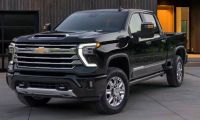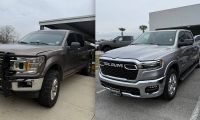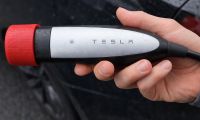Reality is, heavy-framed chassis’ for trucks are at a disadvantage for weight reduction due to the structural demands; and getting smaller is not always a viable option. Therefore, the only cost effective option is a dramatic change in engine technology.
That means truck fuel economy goals cannot be achieved without significant changes in both and engine technology. That leads to the question: Is the industry barking up the wrong tree with too much emphasis on weight?
Surely, weight is a major factor with fuel economy, but there is a significant cost to replacing high-strength steel with aluminum or magnesium.
Just think of a truck’s large size and the demand that they be able to handle heavy loads and towing in conditions that only an ice-road trucker might appreciate. Even current pickups weigh an average of nearly 5,000 pounds (2,300 kg) for a reason.
Just recently, Reuters reported on the truck market’s challenge to reduce weight while keeping the trucks brawny. The new mandates which take effect in 2016, give automakers such as Ford and General Motors just one design cycle to make significant changes. Both the design cycle and the materials will cost the industry a bundle.
Furthermore, major changes in body and chassis structures require extensive validation tests by the industry to meet the crash safety portion of other government mandates. That is why major changes to a platform do not occur every year or every other year.
Nonetheless, design engineers are beginning to shed weight from trucks anyway in key places; realizing, though, success might require more than costly steel substitutes including aluminum, new steel alloys and magnesium.
Automakers know they must reach an average fleet fuel economy of 35.5 miles per gallon by 2016. Light trucks, reported as half of all U.S. auto sales in the first 11 months of 2010, will have to get about 30 mpg (miles per gallon). Relative to the present mileage for trucks of 24.9 mpg per government data, that’s an increase of at least 20 percent; a significant challenge to meet.
Compressed air, a viable solution
For any design challenge there is at least one or two solutions. One area the industry has experimented with in the past has been compressed air, especially for trucks because the system needs to be scalable. Much like an EV which stores kinetic energy during braking and coasting, the energy from the forward motion can be stored in the form of compressed air.
One engine technology that has the advantage of accommodating compressed air is the Scuderi Air Hybrid, because it is based on a split cycle and can be designed with diesel fuel. One half of the cylinders manage the cold side of the 4-cycle process, intake and compression. The other half manages the hot side, power and exhaust. It is the intake and compression part of the cycle that avails the engine to become an air hybrid. When adding the air-hybrid component with a turbo, efficiencies are expected to reach up to 50 percent more than a conventional engine.
As recently as October, 2010, Brunel University of West London has signed a major development and licensing agreement with Guangxi Yuchai Machinery Company Ltd, the largest diesel engine manufacturer in China, to develop an eco-friendly and fuel efficient hybrid engine for municipal buses. The innovative technology works by exploiting the functional capability of a current bus engine to operate temporarily as an air compressor. The Brunel technology is also attracting interest from parties in the USA and India.
More recently, the Scuderi Group announced application for new patents which kicked off its own V-design version which is a natural for making an air hybrid. Trucks would be an obvious choice since they have more room for storage tanks than cars, but light-weight composite tanks may overcome that limitation, too.
Bottom line
In addition to the 2016 target, automakers may have to achieve CAFE standards of 62 miles per gallon for the overall fleet by 2025. That means automakers might have to shed as much as 500 pounds from its trucks by 2016, with further cuts of 1,000 pounds per truck by the early 2020s. Again, weight loss won’t do it alone without major help from engine technologies that store compressed air.
_____________________________
Additional Reading:
Scuderi Group kicks off V-shape split-cycle engine












Comments
Air hybrid technology
Permalink
Air hybrid technology provides extremely knowledgeable information and appropriate guide to acknowledge about all car sales which is definitely an informative and supportive description for searchers of new and used car sales through its valuable contents.
Hybrid systems are starting
Permalink
Hybrid systems are starting to come in wide variety of ways! I think this is one of the common goal of most automobile manufacturers despite competition from the introduction of electric cars. But old mechanical components like air bags for truck suspension remains the same nothing has been changed.
The air hybrid technology is
Permalink
The air hybrid technology is most definitely the way forward for cleaner air, but there is a greener way of obtaining compressed air and I even filtering it so that vehicles not only emit up to 50% fewer emissions, but the compressed air is cleaner than than the City air to begin with. There is a way to produce trillions of litres of compressed air, for free.